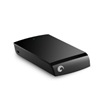Symantec revealed new versions of their flagship NetBackup enterprise-class and Backup Professional midrange backup programs — Backup Professional 2012 and NetBackup v7.5.
Vijay Mhaskar, V . P ., Information Management Group stated that worldwide backup teams are frustrated with skipped backup home windows and non-integrated solutions for physical and virtual backup copies, deduplication and pictures. Presently organizations face a scenario where recovery, the finish goal of why backup copies exist, is complex and unnecessarily costly.
“Our survey of just one,425 organizations worldwide implies that only 28 percent from the information mill completely certain that 100 % from the backed-up data could be retrieved, virtualization backup ranks second cheapest of effective IT initiatives because the complexity demands more agile systems.” states Mhaskar
The NetBackup v7.5 for that bigger businesses includes features such as the integration of incremental backup copies and deduplication to reduce I/O bandwidth and lower time required for backup copies, in addition to to offer eDiscovery without getting to first replicate data right into a separate repository.
“Our tests around the new system versus existing techniques pf backup reveal that a 61GB file being backed up from US to china which earlier required about 4 hrs 18 minutes 7 seconds now takes only one minute 33 seconds,” states Mhaskar.
Symantec also introduced an broadened partnership with NetApp to integrate with NetBackup Replication Director, enabling clients to unify Snapshot and backup management, and take away the price and risk connected with multiple backup and recovery tools
The V-Ray Edition of NetBackup v7.5 can back up data on virtual machines running either VMware or Microsoft’s HyperV. Furthermore, backup managers can also add physical machines to V-Ray’s backup capacity policy and manage both conditions via a single console view.
The update adds a brand new feature known as Virtual Machine Intelligent Policy (Very important personel) to NetBackup v7.5 , that may instantly identify and back up new, moved, or cloned virtual machines, using deduplication to reduce the quantity of data saved. Again, physical machines could be added to the virtual machine backup copies.
According to Symantec, many companies face the issue of cost exposure caused by over retention of backup tapes. NetBackup Search identifies what information to archive and what to remove according to relevance to legal discovery or compliance cases.
Symantec stated additionally, it added bare metal backup copies and restore disaster recovery abilities into Backup Professional 2012, which permit a unsuccessful system to be retrieved to an actual server, or to a Hyper-V or VMware machine. The brand new disaster recovery features also allow entire virtual machines, single files, Active Directory objects, Exchange Emails, or SharePoint Documents from the single-pass physical, VMware or Hyper-V backup to be retrieved.
The NetBackup Accelerator feature functions by copying only incremental file changes individuals incremental file changes are then also deduplicated to further reduce network traffic. When Accelerator can be used to recover data, we have an index that enables it to rapidly restore single documents or files.
“The system monitors the files which have transformed and also the blocks which have transformed within individuals files. Then when a backup is performed, the machine knows what blocks to back up and where they’re,Inch stated Mhaskar.
By the certification policy stands on the SaaS model or can be purchased around the capacitive certification model. The organization needs the items to be accessible by before summer 2012.
“Companies have enough money the quantity of data they decide to store around or pay on the per machine license policy,” Mhaskar clarified.




